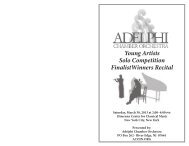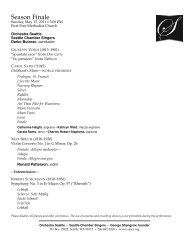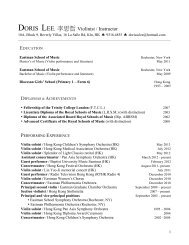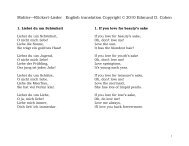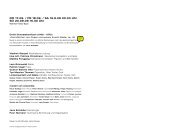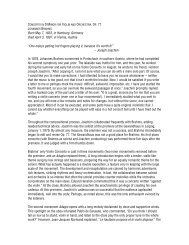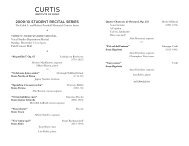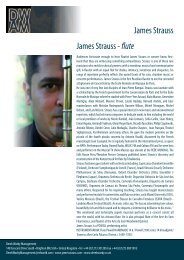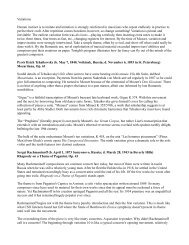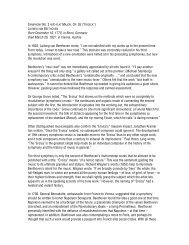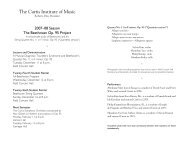Der fliegende Holländer - InstantEncore
Der fliegende Holländer - InstantEncore
Der fliegende Holländer - InstantEncore
You also want an ePaper? Increase the reach of your titles
YUMPU automatically turns print PDFs into web optimized ePapers that Google loves.
14 London Lyric Opera<br />
A new operatic<br />
framework is born<br />
We tend to hear all of Wagner as one<br />
solid mass, but the contrast in the<br />
acoustic worlds of, say, Tristan and Die<br />
Meistersinger is breathtaking. The flying<br />
Dutchman as its own complete and<br />
individual world is already a formidable<br />
achievement. The human world of<br />
this work is clearly provincial and<br />
claustrophobic; it forms a cage, containing<br />
Senta within it. That is also in the music:<br />
the men’s working chorus transforms<br />
seamlessly into the women’s spinning<br />
chorus between the first and second Acts<br />
– there is only work and duty, and the<br />
community thinks and acts as one! Then<br />
in the third act the drunken Norwegian<br />
Sailors’ song is almost cruelly smashed<br />
and drowned out by the Dutchman’s<br />
crew’s wails: the mundane is vanquished<br />
by the rich and strange music of deeper,<br />
darker worlds.<br />
Finally, in the first version of the opera,<br />
there is no redemption theme at the<br />
end, but only a series of loud, brutal<br />
chords, suggesting that the conclusion<br />
of Senta and the Dutchman’s story is not<br />
a transfiguration, but just a real and ugly<br />
death – far, far from the romantic ideal.<br />
Now compare this depiction of ‘reality’<br />
with the emotional extremes of the<br />
Dutchman’s music and you will already<br />
see Wagner’s great ability to create worlds,<br />
not just musical scores. The ending you<br />
will hear tonight belongs more to the<br />
Dutchman’s world, a change of heart from<br />
the composer that dates from an 1860<br />
concert revision of the Overture, where<br />
there is a sense of completion about the<br />
protagonists’ love, with a soaring theme<br />
concluding the sacrifice; certainly this is<br />
the more rounded musical solution. In the<br />
original version it is as if we view the ending<br />
from the reality; in the revision, from the<br />
archetypal. Later in his career, as at the<br />
end of Götterdämmerung, Wagner might<br />
have given us both.<br />
But, in either version, by the end of this<br />
seminal piece one thing is clear: opera<br />
itself will never be the same again. It has<br />
grown up in that first short step that the<br />
Dutchman takes, away from the turbulent,<br />
symbolic, never-ceasing sea and its<br />
archetypal depths, on to the dry land and<br />
the reality of Sandwike. This one step,<br />
spanning the two worlds that Wagner<br />
would stand between for the next forty<br />
years, marks a moment of discovery that<br />
no single opera written since has been<br />
able to ignore.<br />
© Keith Warner 2008<br />
Director<br />
LLO Dutchman_aw.indd 14 18/11/08 15:09:18



